

I think science fiction (and to some extent fantasy) writers tend to fall into one of two camps: Wellsians or Vernians. Both men were seminal figures in the development of modern science fiction. Both enjoyed enormous popularity in their time. Both created landmark works that staked out iconic images and themes. Lunar exploration, extreme terrestrial exploration, genetic experimentation and controlled evolution, mechanized global warfare and weapons of mass destruction, and even the “mad scientist” are just a few of the contributions they have in common.
Wells (1866 – 1946) wrote the time-travel and alien-invasion novels by which all subsequent would be measured. Verne (1828 – 1905) wrote the “lost world” and undersea-travel books that cast a shadow over any that might follow.
Both men were often compared to one another, and it’s clear that neither was crazy about it. Nowadays we’d call Verne a “hard SF writer,” meaning that he’s more focused on the technology and plausibility of his stories. Wells was definitely a “what-if” guy. He once wrote that he liked to “put an impossible thing into the world” and then step back and see what happens. His bent was more sociological than that of Verne, who considered himself more of a predictor. Verne wanted to extrapolate what future technologies could emege from present ones. Wells wanted to extrapolate what impacts such developments might have on their developers.
Wells was often taken to task for not being as plausible as Verne, for not being a predictor. He said flat out he had no interest in predicting the future; he was writing about the present, in the Heinlein sense of “If this goes on….” Verne was often criticized for being more interested in his engineering than in his characters.
It’s not often discussed, but also not surprising, that a rivalry existed between the two men. They weren’t just competitors, they fundamentally disagreed with each other’s approach. Verne was in no way a fantasist, and once said about Wells, “I sent my characters to the moon with gunpowder, a thing one may see every day. Where does M. Wells find his cavorite? Let him show it to me!” (Cavorite being a gravity-proof substance invented by Wells to effect travel in First Men in the Moon.)
I’ll say flat out that I fall on the side of Wells. I don’t care about the submarine. I don’t care about the gunpowder. I care about the characters and the impact of the submarine and the gunpowder on the characters’ world. When Star Trek becomes more about the Enterprise than the people in it, I’m gone. (At some point I should blog about pitching to Gene Roddenberry when ST:TNG was in preproduction. What a laff fest that was.) I don’t care if cavorite is real. When you bring on the guy in the white coat and start explaining cavorite to me, your story becomes about cavorite. For Wells cavorite was literally a launching point for his story. The guy wanted to get to the moon to see what was there. Verne wants to write big cannon porn more than actually get where he’s going. He’s all about the stuff.
I don’t remember Verne’s characters. The only standouts are Phileas Fogg and Captain Nemo, and Fogg is a cipher (largely a parody of British colonialism; it’s worth remembering that Verne was French) and Nemo is a rationalization (Verne really loved his way-kewl ship-sinking war machine submarine but understood that he couldn’t just go putting the whammy on sea trade, so he made Nemo an antiwar activist who was one of the first embodiments of the “destroy villages in order to save them”/”war to end war” school of thought. Do you buy this? Me neither. It’s hardly remembered because the most developed character in 20,000 Leagues Under the Sea is really the Nautilus.)
I remember Wells’ journalist from War of the Worlds. I remember his narrator from The Time Machine. The fact that they go unnamed is all the more remarkable. I remember virtually everyone they meet. Verne strikes me as little more than a tour guide, walking characters through scenes so he can point out the Really Neat Details of his Really Kool Ideas. You can almost hear the narrative pauses so that we can ooh and ahh.
While I’ll grant you Wells could get bogged down in a didactic agenda (see Things to Come), his main concern is depicting what happens when the extraordinary invades ordinary lives. I’ll take that any day, even if I never discover where the extraordinary comes from. Linear thinkers trying to chart the world on graph paper have to let that go. They’ve forgotten, or perhaps never understood, that it doesn’t matter how the goddamned warp drive works. That the warp drive is bullshit. That the people who thought it up thought it was bullshit. That it was just a way of getting somewhere so that they could tell stories. That it’s cavorite.

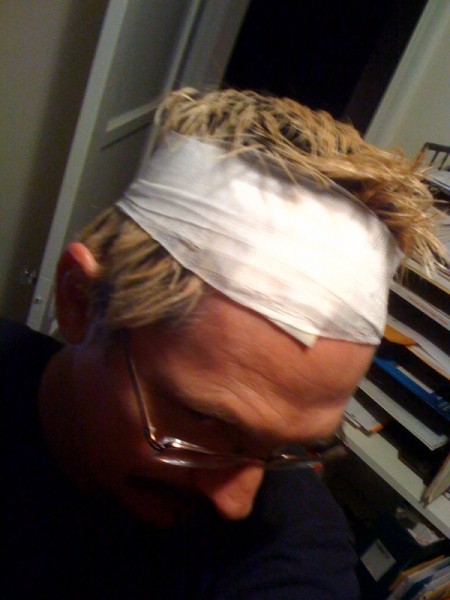



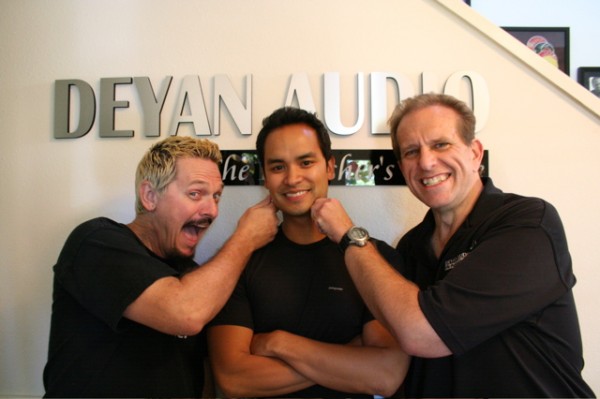
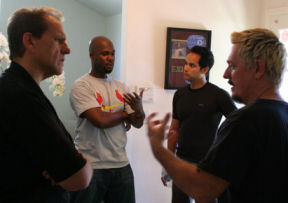
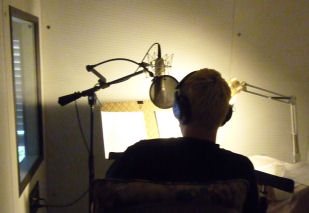 Ramon and JD (who, I should mention, are also offensively good-looking men) took off, and Bob went into the studio with me to record the Intro. Take 1: you choked on that one a little, Steve. Take two: Just relax. Take three: Stop moving around so much, okay? Take four: wow, you really suck major hose at this, don’t you, Boyett? (Bob never actually said any of those; he’s way too nice. )
Ramon and JD (who, I should mention, are also offensively good-looking men) took off, and Bob went into the studio with me to record the Intro. Take 1: you choked on that one a little, Steve. Take two: Just relax. Take three: Stop moving around so much, okay? Take four: wow, you really suck major hose at this, don’t you, Boyett? (Bob never actually said any of those; he’s way too nice. )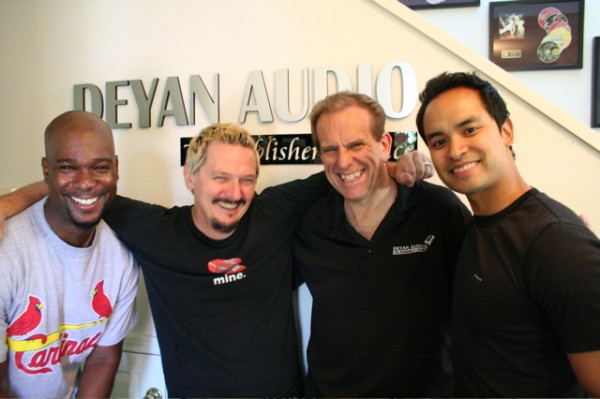
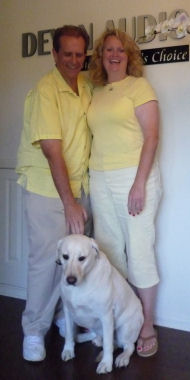

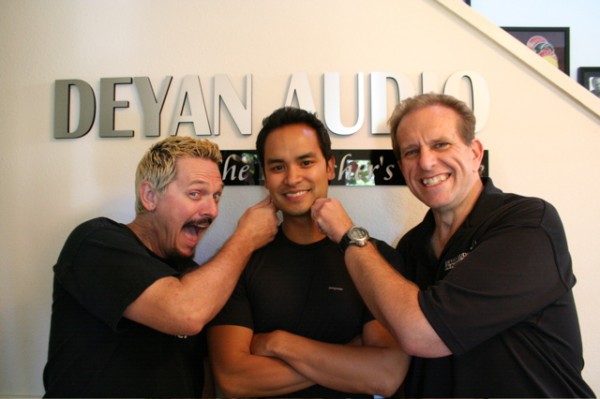
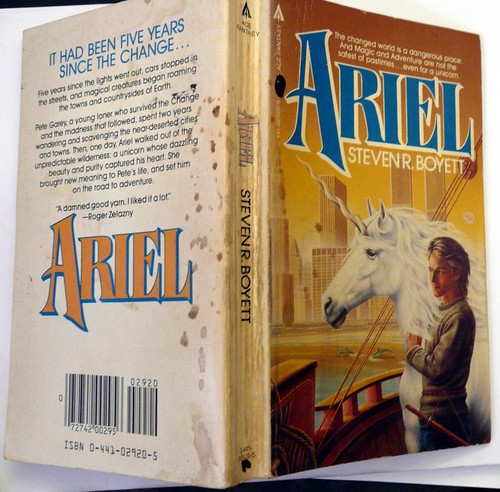
 So I’m out in the middle of shit nowhere in the northern Nevada desert exploring art projects on the playa one night at Burning Man with my friend Scott. We’re looking at this yurt that someone has set up. There’s nothing around it. Scott tells me he wishes he had a map of the Black Rock City so he could mark locations of some theme camps and art installations. (For a week the temporary Black Rock City that houses Burning Man is the fourth-largest city in Nevada, dontcha know.)
So I’m out in the middle of shit nowhere in the northern Nevada desert exploring art projects on the playa one night at Burning Man with my friend Scott. We’re looking at this yurt that someone has set up. There’s nothing around it. Scott tells me he wishes he had a map of the Black Rock City so he could mark locations of some theme camps and art installations. (For a week the temporary Black Rock City that houses Burning Man is the fourth-largest city in Nevada, dontcha know.)